Popular Products
-
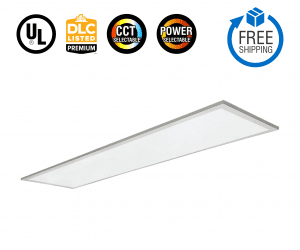 15-40W Selectable Edge-Lit Light Panel CRI 83 (1′ x 4′)
15-40W Selectable Edge-Lit Light Panel CRI 83 (1′ x 4′) -
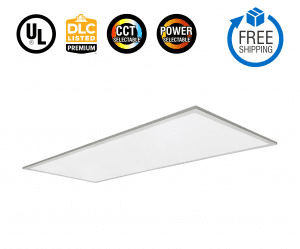 30-72W Selectable Edge-Lit Light Panel CRI 83 (2′ x 4′)
30-72W Selectable Edge-Lit Light Panel CRI 83 (2′ x 4′) -
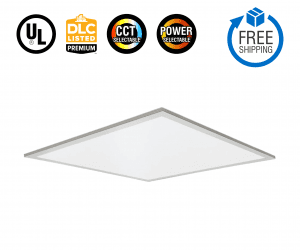 15-40W Selectable Edge-Lit Light Panel CRI 83 (2′ x 2′)
15-40W Selectable Edge-Lit Light Panel CRI 83 (2′ x 2′) -
 15W/20W/25W/30W/40W Tunable LED Panel Light, 2’x4′, 35/40/57/65K CCT, AC120-277V
15W/20W/25W/30W/40W Tunable LED Panel Light, 2’x4′, 35/40/57/65K CCT, AC120-277V -
 15W/20W/25W/30W/40W Tunable LED Panel Light, 1’x4′, 35/40/57/65K CCT, AC120-277V
15W/20W/25W/30W/40W Tunable LED Panel Light, 1’x4′, 35/40/57/65K CCT, AC120-277V -
 15W/20W/25W/30W/40W Tunable LED Panel Light, 2’x2′, 35/40/57/65K CCT, AC120-277V
15W/20W/25W/30W/40W Tunable LED Panel Light, 2’x2′, 35/40/57/65K CCT, AC120-277V -
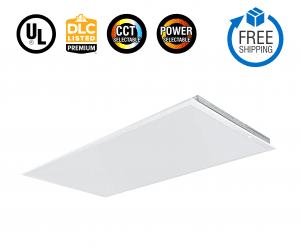 35-46W Selectable Sensor Based Back-lit LED Panel Light (2′ x 4′) – CASE PACK (4 PCS)
35-46W Selectable Sensor Based Back-lit LED Panel Light (2′ x 4′) – CASE PACK (4 PCS) -
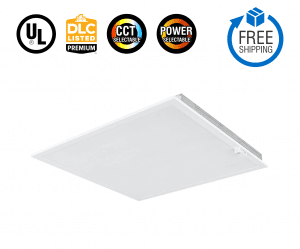 20-30W Selectable Sensor Based Back-lit LED Panel Light (2′ x 2′) – CASE PACK (4 PCS)
20-30W Selectable Sensor Based Back-lit LED Panel Light (2′ x 2′) – CASE PACK (4 PCS) -
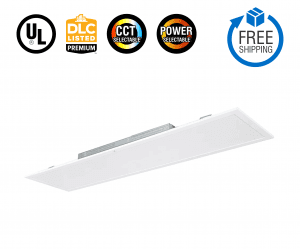 20-30W Selectable Sensor Based Back-lit LED Panel Light (1′ x 4′) – CASE PACK (4 PCS)
20-30W Selectable Sensor Based Back-lit LED Panel Light (1′ x 4′) – CASE PACK (4 PCS)
LED Lighting for Educational Facilities Knowledge Base
What are the types of commercial LED lights?
Commercial Indoor Lighting
- Drop-Ceiling Lights – Panel & Troffer Lights.
- LED High Bay Lights – UFO & Linear Fixtures.
- LED Low Bay Lights.
- LED Ready Strip Fixtures.
Commercial Outdoor Lighting
- LED Area Lights – Shoebox & Post Top Lights
- LED Flood lights
- LED Canopy Lights
- LED Street Lights
What makes a light commercial grade?
Commercial grade light products are made of better quality LED drivers, led modules, heat sinks, and more to last longer than residential grade products. For that reason, they are more durable and have an extended lifespan compared to residential lighting options.
What kind of lights do office buildings use?
For large, open spaces like most office environments, fluorescent or light-emitting diode (LED) bulbs are the best option, but halogen and incandescent are also available. Fluorescent bulbs are the most common because they are the older technology, but LED bulbs have several advantages over their elder sibling.
How many watts should an office light be?
The current regulations indicate that to illuminate an office, for example, we recommend about 300-400 lumens per square meter of surface. Therefore, if your goal is to illuminate an area used as an office whose surface is 100 square meters, the light potency you will need will be around 30,000-40,000 lumens.
What does it mean to be commercial grade?
A quick Google search will tell you that commercial grade is a term used to distinguish between products that are intended for commercial use, typically in public spaces, and those that are intended for domestic use. It implies that the product is more durable, working better for longer even when in constant use.
What is the best color temperature for office lighting?
Cool or neutral color temperatures (somewhere between 3000 K & 4000 K) are usually deemed appropriate for office spaces. Lighting with cool tones (3500 K – 5000 K) is suitable for hospitals and medical facilities as such color temperatures promote focus and alertness.
What is 4000K light good for?
This color range produces a balanced color tone, not too blue and not too yellow. This creates an environment that can keep employees alert through the day. Spaces that would benefit from this type of light would be commercial spaces, retail spaces, hospital offices and hallways, and office spaces.
Can LED replace natural light?
LEDs can mimic the hue and intensity of natural sunlight and help to maintain the human body’s natural circadian rhythm. This is because LED components allow for finer adjustments of color, brightness and intensity.
